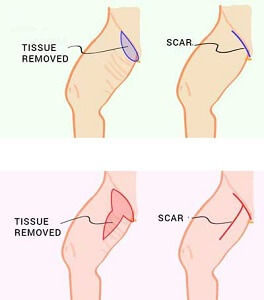How Much Does a Thigh Lift Cost?
A thigh lift can substantially improve their contour, significantly removing excess fat and sagging skin that creates an undesirable silhouette and sculpting the thigh area for a much leaner, firmer, and more toned overall appearance.
For women who do not feel confident due to excess fatty deposits around the thighs, whether they are located in the inner or outer area, a thigh lift procedure will significantly improve the contour of your thighs and the way you feel in your own skin!
How Much Does a Thigh Lift Cost?
The average cost of a thigh lift is $5,200, according to the American Society of Plastic Surgeons. However, this price is not all-inclusive and does not include other costs related to the surgery, such as anesthesia costs, hospital or surgery center fees, and operating room rents. So, the total amount that you would have to pay for this procedure would be much higher.
Factors that affect the final cost of a thigh lift
There are several factors that influence the final cost of this type of body lift, including:
Location of the provider
The costs associated with running a cosmetic surgery clinic are not the same across the country. For example, in large cities rentals and rates are higher than in rural locations and remote states. Also, the cost of living is higher in certain cities, and as a result, the clinics in that areas have higher prices.
The expertise of the provider
Usually, a provider with more experience will charge much more. This is why, in order to get access to the best possible service, most patients are willing to pay a higher price.
Various surgical expenses
Depending on the provider, these expenses may include anesthesia fees, the cost of recovery garments, fees for renting the operating room, prescriptions for medications, extra medical tests, and separate fees for the board-certified plastic surgeon.
Thigh lift procedure overview
 Thigh lift surgery helps to reshape the internal and/or external portion of the thighs, by removing excess skin and, most of the time, fat. After an initial consultation, the procedure can take place.
Thigh lift surgery helps to reshape the internal and/or external portion of the thighs, by removing excess skin and, most of the time, fat. After an initial consultation, the procedure can take place.
First, the areas that need intervention are marked, and they are infiltrated with a special solution containing a local anesthetic, adrenaline, bicarbonate, and Lactated Ringer’s solution. This will help the liposuction process and, at the same time, reduce postoperative pain.
Then, liposuction follows, which, in this case, will involve a complete removal of the fat from the preoperatively marked quadrant, both from the deep and superficial layers of the skin. The remaining skin is very thin and can be removed extremely quickly by avulsion. The advantages of this procedure are short duration, minimal bleeding, keeping the venous and lymphatic matrix almost intact, and superior scarring.
You might also like our articles about the cost of breast lifts, arm lifts, or facelifts.
The scar can be placed in the medial area, either in the groove of the thighs, on the inner thigh close to the groin, or on the outside of the thigh, depending on the needs. After removing the skin, the tissue is successively approximated by temporary sutures on the incision and then, depending on the needs of the skin, permanent sutures. The suture threads will melt by themselves, the suture line will be covered with a special dressing and then the thighs will be compressed with a special corset.
Potential risks
As in the case of any other plastic surgery, the complications must be known and understood, because we are dealing with living tissues that will require healing and can evolve unpredictably.
Seroma
This represents the accumulation of lymph, which may require simple aspiration guided by a needle or even re-intervention. It occurs quite rarely and usually resolves itself.
Bleeding
This can cause an extensive hematoma (needs reintervention), but it happens very rarely, because the dissection is no longer done in the deep tissues.
Infection
The infection can occur during any minimal or extensive surgery and can appear only at the skin level or in-depth, but it happens very rarely.
Advantages of a thigh lift surgery
If you decided to undergo a thigh lift procedure, you should know that this will come with many advantages including:
- increased ease of movement;
- better-fitting clothes and greater confidence;
- reduction in the appearance of loose, baggy skin;
- visible results immediately after surgery;
- tighter skin around the thigh with better overall contours.
A consultation says whether you’re a good candidate
Both female patients and male patients who present laxity of the skin combined most of the time with an excess of fat in the thighs can follow this procedure. Patients must be in good or very good health, without decompensated chronic diseases, and without regularly administered treatment for a chronic condition, which may increase the risk of complications (anti-coagulants, anti-aggregates, immunosuppressants, anti-inflammatory drugs, etc.).
People with chronic diseases such as decompensated diabetes that requires medication with many daily doses, moderate or severe hypertension that can only be controlled by frequent treatment, decompensated autoimmune diseases, mental illnesses with chronic treatment, smokers over 10 cigarettes/day, bleeding and coagulation disorders, or patients who have unrealistic expectations of the result won’t be considered good candidates and will probably be denied the procedure.
What causes excess fat in the thigh area?
There are several factors that can determine the deposition of excess adipose tissue in the thigh region. It can appear as a result of the accumulation of extra pounds and weight fluctuations, but it also tends to appear as part of the natural aging process or due to genetics.


Leave a Reply
Want to join the discussion?Feel free to contribute!